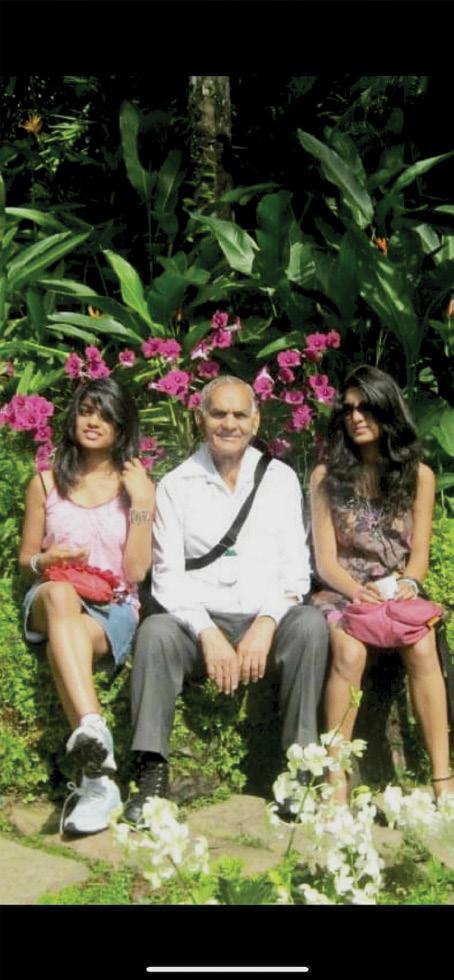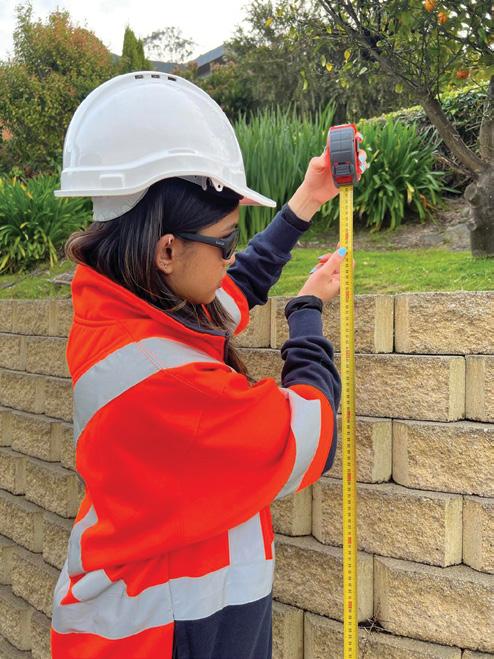
4 minute read
Mentor, NAWIC Member and D&I Advocate

In your experience what improvements could be made in the industry for women?
Advertisement
We have observed that there could be times where the site compound may not necessarily be fully equipped for women, such as having proper dedicated female toilets, having sanitary bins in place, or having a separate change/wash area etc. Although this has been implemented on most of the sites that we have worked on, we believe, a conscious effort should be made to equip every site compound on construction sites suitable for females. This will not only guarantee that women feel safe & comfortable on-site but will also motivate and encourage more women to consider a career in construction. It’s all about the efforts put in by everyone to work towards building a better narrative for women in construction. Building a better future for the construction industry.
Where will your wings take you next do you think?
Salonee: Along with achieving a dynamic career in Civil Engineering, I aim to construct sustainable & environmentally friendly structures. This comes from my experience in construction that has made me realize how vital it is to care for and preserve our environment without causing it harm. I believe that it is just as important to build environmentally safe structures as it is to build structurally safe structures. After all, the future is green engineering.
Isha: I would like to see more renewable energy incorporated in infrastructure and design, like eliminating the use of gas and using biogas or geothermal energy instead. This is not only just good for the planet but is also cost efficient in the long run. My goal is to spread awareness about new energy resources and renewable energy and educate as many people as possible about the many benefits of using these.
DIVERSITY & INCLUSION
Let’s Stand Together & Call It Out to Create Change
Lisa Hogben I was 14 years old when I first became aware that some people might treat me differently because of the colour of my skin.

In a small town in south-east England, as I walked to the bus stop after school with my friends, I found myself surrounded by a crowd of older kids from another school.
A girl who I now know is called Sam, took two steps towards me and said:
“Why don’t you piss off back to your Arab land”
And then she punched me in the face.
My world slowed down. What was probably just a matter of seconds felt like an hour. Other than a few sniggers, nobody did anything.
Feelings of shame, humiliation and rejection intensified as the circle of witnesses dispersed, and I walked towards my bus trying desperately not to cry. I felt like everyone was watching me, but I had never felt more alone. It hit me like a second punch.
That evening, when my mother drove like a banshee to Sam’s school and marched into the head teacher’s office, there was no doubt in my mind, my mother’s, or the head teacher’s that I had been the victim of a racist act.
That punch paired with those words was clear cut. I will keep the trauma with me always, but I got empathy, action and a kind of closure.
Not-so-micro-inequalities
But what about when it’s not so obvious? When the discriminatory acts are small, or subtle, or gray?
These are labelled ‘micro inequalities’, or when related to race or ethnicity, they are collected into the term, ‘casual racism’. Both terms are used to define seemingly small acts that can make someone feel singled-out, unwelcome or unworthy.
In the workplace, casual racism might look something look like this:
⋅Assuming that a black employee is of a lesser employment status. ⋅ Commenting on how well a person of colour speaks English. ⋅ Asking a black woman if you can touch her hair, or touching it without asking. ⋅ Asking a person of colour where they’re really from. ⋅ Using a derogatory term in a “joking” manner. “Just like other forms of racism, casual racism can marginalise, denigrate or humiliate those who experience it. Harm can occur even if conduct isn’t motivated by hate or malice [..] because racism is as much about impact as it is about intention”. Dr. Tim Soutphommasane
For a person of colour, it doesn’t feel casual or small. These moments provide us with a stark reminder of our hypervisibility in a workplace where there aren’t many people that look like us.
And then when somehow nobody sees it or calls it out, we feel the sting of the second punch.
Silent witness
Thomas Vance, a counsellor and postdoctoral psychology fellow at the New School for Social Research in New York calls this phenomenon, in which no one in a group of witnesses chooses to call out or disrupt a problematic event, the bystander effect.
Though there might be something in your gut that’s telling you something isn’t right, “the greater the number of people present, the less likely people are to help a person in need or distress […] because being part of a large crowd makes it so no single person has to take responsibility for an action.” NY Times When it comes to racism, casual or otherwise, being silently anti-racist is not enough.
We need to speak up.










